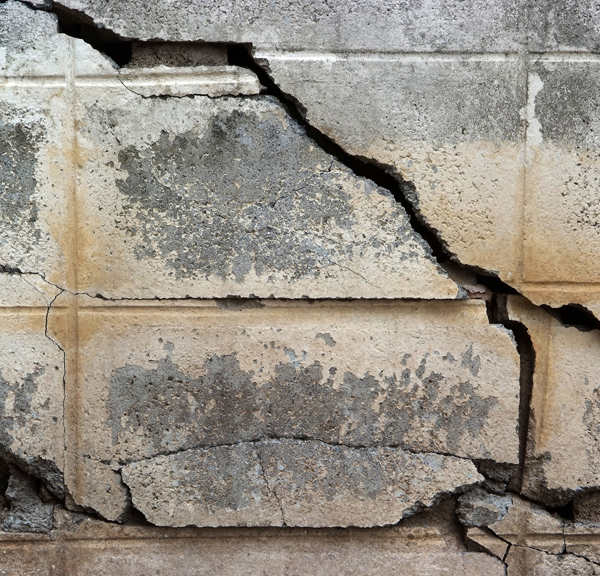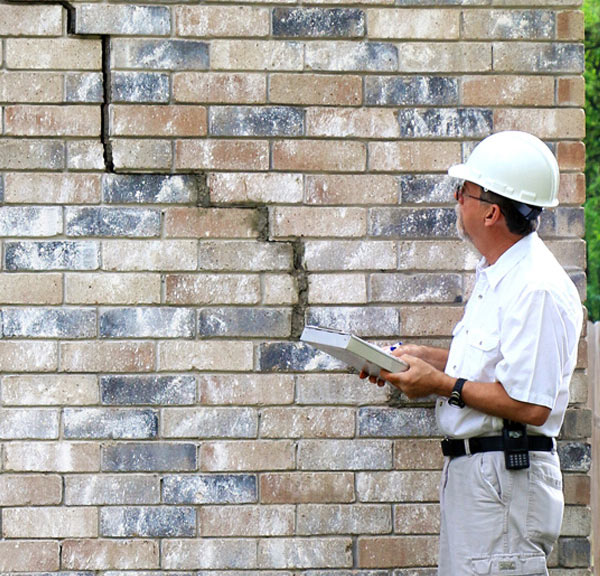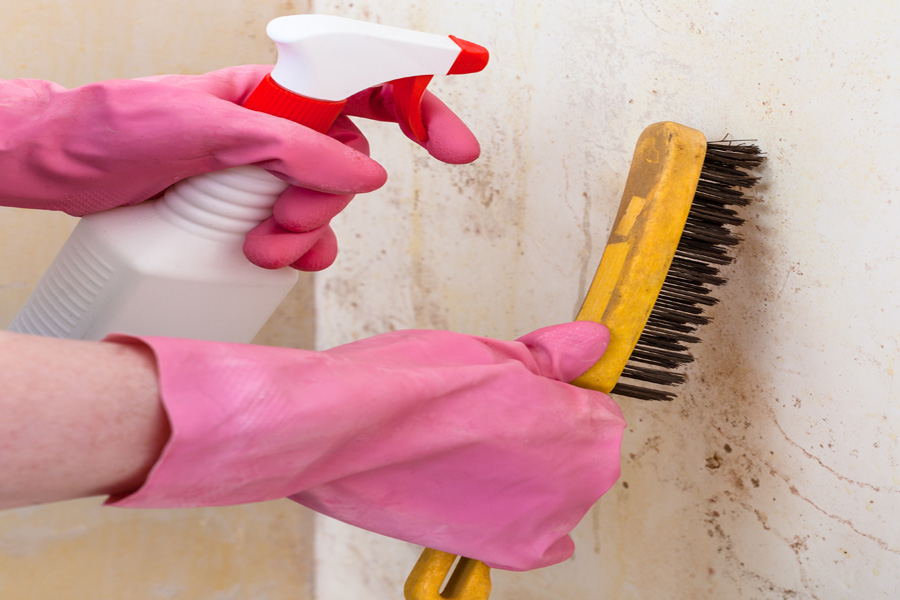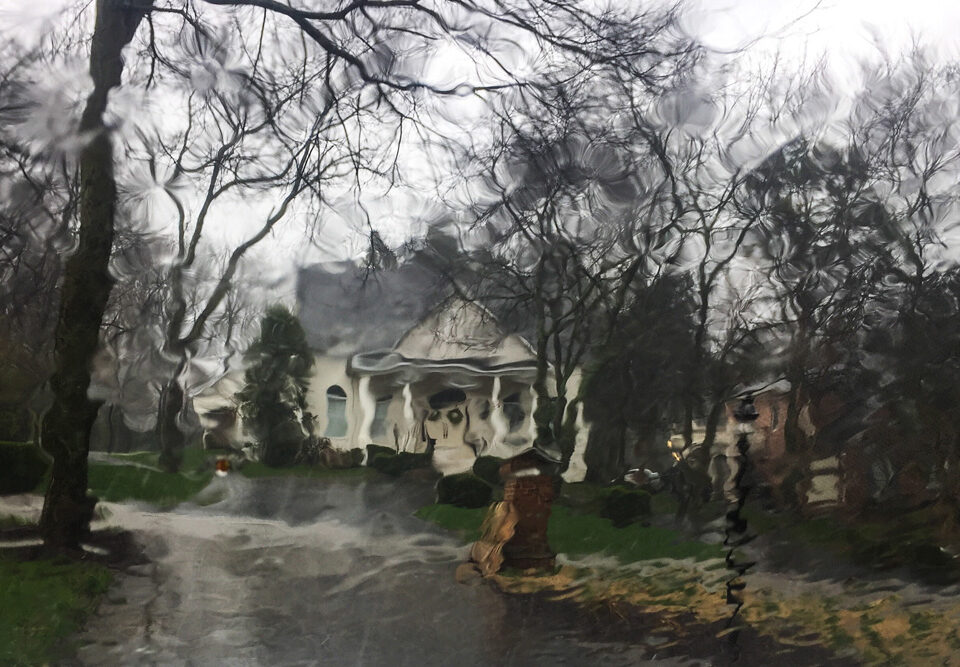
Understanding Different Types of Foundation Cracks
Harmless Blemish or Structural Risk?
Every homeowner dreads the sight of cracks in their home’s foundation. While some cracks are mere cosmetic blemishes, others can signal severe structural issues. Recognizing and understanding the different types of foundation cracks is important for the future safety and value of your home. Let’s take a look at a number of different types of cracks and what they could mean to your home and its foundation.
Horizontal Cracks
Horizontal cracks in the foundation are a serious concern. They often result from uneven soil pressure and hydrostatic water pressing against the foundation wall, leading to bowing and water leakage.
To recognize a horizontal crack, look for a linear crack that runs parallel to the ground along the foundation wall. These cracks can occur in both block and poured concrete foundations. They are common in areas with freezing and thawing cycles, like the Pittsburgh region and Southwestern, PA.
Stair Step Cracks
A stair-step crack in a foundation is a type of crack that typically occurs in block foundations. It’s named for its resemblance to the pattern of stair steps, as it follows the mortar joints between the blocks. These cracks can indicate serious issues with the foundation, often resulting from settlement or sinking in one area of the foundation or moisture-related problems outside of it. Look for a zigzag pattern that follows the lines of the mortar joints. If the crack is wide enough to fit a quarter, it’s a sign that professional inspection and repair might be necessary.
Hairline Cracks
A hairline crack in a foundation is a very thin crack that commonly appears in new construction foundations. These cracks are usually a result of the settling and drying process of the new foundation. Recognizing a hairline crack is relatively straightforward due to its thin appearance, often resembling a fine line or hair. They typically appear within the first year of construction. While hairline cracks are usually cosmetic and not structurally significant, it’s important to monitor them for any changes in width or length, as this could indicate more serious underlying issue.
Vertical Cracks
Vertical cracks are less serious than horizontal ones and are often found in poured foundations. These cracks, caused by foundation settling or the natural concrete curing process, don’t usually pose a structural threat. Repairs typically involve epoxy or polyurethane injections, which are relatively inexpensive.
Vertical cracks in brick exterior walls are a bit different from those in poured concrete foundations. While vertical cracks in poured foundations are often less serious, the implications of vertical cracks in brick walls can vary and sometimes be more concerning. In brick walls, vertical cracks can occur due to several reasons such as settlement, thermal expansion, or structural issues. The severity and cause of the crack in a brick wall need to be evaluated to determine the appropriate action. If the cracks are minor and caused by non-structural factors like slight settlement or thermal movement, they might not be a serious concern. However, if they are due to structural issues, they require professional assessment and repair. The repair methods may differ from those used for concrete foundations and often involve repointing or reinforcing the affected area.
Diagonal Cracks and Shrinkage Cracks
Diagonal foundation cracks, running at a maximum of 30 degrees from vertical, are similar to vertical cracks in terms of their threat level. Caused by natural curing or settlement, these cracks can also be repaired with epoxy injections. Monitoring these cracks for any significant changes is recommended.
Shrinkage cracks occur in new homes as poured concrete foundations dry and lose moisture. These vertical cracks are typically not structurally threatening but can be a concern in areas with high levels of Radon gas. Contacting the builder or considering epoxy crack injection is advised if the cracks expand or multiply.
Foundation Slab Cracks
Poured concrete slabs can develop cracks over time due to curing, settling, and frost heave. Understanding the cause of these cracks is essential. Cracks due to slab settlement, particularly if resulting from poor workmanship or soil conditions, require immediate professional attention.
Structural Foundation Cracks
These cracks are a severe concern as they compromise the structural integrity of the home. Horizontal cracks and cracks wider than a quarter inch are telltale signs of structural deficiencies.
Recognizing and correcting structural foundation cracks in a residential home requires a careful and methodical approach. Initially, homeowners should look out for warning signs like horizontal cracks, which often indicate structural issues, or any cracks wider than a quarter inch. Changes in the size or appearance of cracks over time, along with symptoms like sticking doors or windows, uneven floors, or gaps around frames, are also red flags. Once these signs are identified, it’s crucial to have a professional assessment conducted by a foundation repair specialist. This assessment will help determine the cause of the cracks, whether they are due to natural settling, soil pressure, temperature changes, or more serious structural issues.
Correcting structural foundation cracks may vary in complexity. Minor cracks can often be sealed with epoxy or polyurethane injections. However, more significant structural cracks may require extensive repair methods such as underpinning, installing piers or helical screws, or using soil stabilization techniques. In some cases, the foundation may need additional reinforcement with steel beams to ensure its integrity.
Additionally, preventive measures and regular maintenance are key to avoiding future issues. This includes regularly inspecting the foundation for new or worsening cracks, ensuring proper drainage around the home to reduce soil pressure, and promptly addressing any plumbing leaks or moisture problems. By taking these steps, homeowners can help protect the safety and structural integrity of their homes.
Implications and Repair Options
Each crack type has its implications for a home’s structural integrity. From cosmetic repairs to significant structural restorations, understanding the cause and appropriate repair method is crucial. Professional assessment and repair are often necessary to ensure the home’s safety and longevity.
Regular inspections and prompt action at the first sign of cracks can prevent minor issues from escalating into major ones. Understanding the causes and types of cracks helps in taking timely and appropriate measures.
Identifying and understanding different types of foundation cracks is key to maintaining the structural integrity and safety of your home. While some cracks might be simple to fix, others require professional attention. Regular inspections and a good understanding of these cracks can go a long way in ensuring your home remains a safe and secure place to live.
Got Foundation Problems? We Can Help
If your foundation has serious issues and you need someone you can trust to get the job done right the first time, call D-Bug Waterproofing at 855-381-1528 or contact us today.






